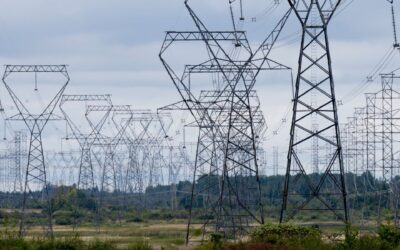Canada’s consumer carbon pricing system is the one that’s occupied the headlines. Canadians and small businesses pay for the carbon dioxide that comes from burning fossil fuels when they buy that fuel. This consumer-facing carbon price increases the costs of gasoline, diesel, and gas, creating incentives for consumers to switch to lower-carbon or more efficient alternatives. The federal government sends the revenue it generates back to Canadians in the form of quarterly cheques.
Canada’s industrial carbon pricing systems, on the other hand, apply to big emitters. And unlike Canada’s other carbon pricing policy, those systems go about their business quietly. The industrial systems differ from the consumer carbon price in several important ways.
First, industrial carbon pricing systems in Canada—there are several, with various provinces tailoring their own systems to local context—are unlike the consumer carbon price in that they create a credit market. We often refer to industrial carbon pricing systems as large-emitter trading systems or LETS. Big emitters that reduce the most emissions can generate credits they can sell for cash in a credit market. That market helps to create strong incentives to reduce emissions, but it also means that low-carbon projects can use the prospect of credits to attract investment into Canada.
Second, LETS are explicitly designed to protect competitiveness of businesses—even when competitors operate in jurisdictions without carbon pricing. Unlike the consumer carbon price, big emitters only pay for emissions above a certain threshold. As result, LETS impose much smaller costs on business but create big incentives for reducing pollution when they are working as they’re supposed to. That especially matters when the threat of Trump tariffs puts pressure on companies’ bottom lines.
In short, LETS create incentives for Canadian businesses to reduce their emissions without reducing what they produce.
Third, LETS generally don’t increase costs for consumers. That’s partly because it keeps carbon costs low, as noted above, and so firms don’t have big costs to pass on to buyers. But it’ also because LETS mostly apply to businesses that operate in global markets (electricity being the main exception). Domestic policy doesn’t set the price of steel or cement clinker, international markets do. And that means that companies that face the industrial carbon price can’t pass on costs to consumers and everyday Canadians. (Badly designed LETS could affect profits for shareholders or wages for workers, but as I noted above, the system has been explicitly designed to lower costs for firms to avoid that outcome.)
Fourth—and maybe most importantly— LETS are Canada’s most effective climate policy when working well. Our analysis shows that LETS can drive around three times more emissions reductions by 2030 than the consumer carbon price.
And finally, LETS are largely defined by the provinces, allowing them to make decisions which are best for their populations. While most provinces now face the federal consumer carbon price, most provinces also have their own LETS. They meet minimum standards set by the federal government to ensure there’s a level of alignment across systems, but provinces and territories are free to develop regional LETS tailored according to their own priorities and own unique context—and most provinces have done exactly this. Indeed, the principles of LETS were first pioneered in Alberta, and Alberta’s TIER (Technology Innovation and Emissions Reduction) system remains Canada’s largest carbon market.
As with all policies, there’s still room to improve large-emitter trading systems in Canada. But these provincially-led systems are the workhorses of current Canadian climate policy—altogether industrial carbon pricing systems in Canada are the single-biggest driver of emissions reductions expected over the next five years by 2030. These systems are critical to maintain competitiveness while reducing industrial emissions. They are distinct from consumer-facing carbon pricing, with different mechanics and unique costs and benefits, and shouldn’t be confused and conflated.








